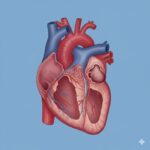Every school’s dream is having brilliant students. But here’s the truth no one says out loud: you can’t teach sharp minds in stuffy, polluted classrooms.
Imagine teaching fractions or algebra while breathing in dust, mould spores, chalk particles, and germs swirling in the air, or children solving math equations with lungs weighed down by toxins, teary eyes and foggy brain. It’s not learning its survival. It’s like asking both teachers and pupils to run a marathon with “heavy backpacks strapped to their lungs”.
We ought to celebrate our Teachers, everyday. This year, we focus on “Recasting teaching as a collaborative profession” hits home. Collaboration isn’t only about lesson plans or policies; it’s about creating healthier classrooms together; spaces where teachers can teach with energy, students can learn with clarity, and education systems can truly thrive.
The Hidden Enemy in Classrooms
Every day, teachers battle through sore throats and fatigue. Students struggle to stay alert, not from laziness, but from breathing air starved of oxygen. Parents are left puzzled by their children’s dwindling performance, unaware that the true culprit is often invisible: poor indoor air quality.
- The World Health Organization (WHO) reports that air pollution affects neurodevelopment, leading to lower cognitive test outcomes, negatively affecting mental and motor development.{ https://www.who.int/news/item/29-10-2018-more-than-90-of-the-worlds-children-breathe-toxic-air-every-day?utm_source}
- Studies also show that improving classroom air quality boosts students’ performance by as much as half a grade level
- Most classrooms record CO2 levels 2-3 times higher than WHO’s safe limit leading to fatigue and poor concentration.
While policymakers focus on exam reforms, teaching methods, and curriculum debates, classrooms quietly fill with recycled, polluted air. The result? Diminished cognitive performance, declining health, and infections that spread faster than the morning bell.

Common Air Pollutants Typically Found in Classrooms, Libraries, and Staff Rooms
- Particulate Matter (PM2.5 & PM10)
Sources:
- Outdoor air seeping indoors through (vehicle fumes, industrial emissions);
- Chalk dust, paper dust, and settled dust stirred up by movement
2. Mould Spores and Fungal Growth
Sources:
- Damp walls, leaky roofs, poorly ventilated spaces, and old books in libraries
3. Carbon Dioxide (CO2)
Sources:
- Crowded, poorly ventilated classrooms and staff rooms causing drowsiness, poor concentration and fatigue
4. Volatile Organic Compounds (VOCs)
Sources:
- Cleaning products, paints, glues, furniture polish, and markers. Long-term exposure affects respiratory and neurological health.
5. Biological Contaminants
Sources:
- Bacteria and viruses from sneezing, coughing, and shared surfaces
- Pet dander or pollen brought in on clothing
6. Carbon Monoxide (CO)
Sources:
- Generators, vehicle exhaust and faulty indoor appliances
7. Ozone (O3)
Sources:
- Office equipment like the copiers and printers. It irritates the lungs and worsens asthma
8. Nitrogen Dioxide (NO2) & Sulphur Dioxide (SO2)
Sources:
- Traffic emissions near urban schools, staff rooms close to generators.
Combined, these pollutants reduce oxygen supply, trigger, asthma, weaken immunity, and impair cognitive performance directly affecting both teaching and learning outcomes.
The Oxygen Advantage
Here’s where the story flips. Clean, oxygen-rich air is not just about breathing, it’s about thinking better, effective teaching, learning faster, and staying healthier.
🧠 Mental Clarity: Pure oxygenated air fuels the brain, improving memory and concentration.
✍🏾 Improved performance: Students absorb lessons more effectively and perform better in exams.
💪 Stronger Immunity: Fewer coughs, colds, and infections mean fewer sick days for both pupils and teachers.
😌 Better Respiratory Health: No more wheezing or struggling through dusty, poorly ventilated classrooms.
Reality Check
Picture this: a teacher says, “Class, take a deep breath.”
Instead of Oxygen, 40 students inhale chalk dust, germs from last week’s flu outbreak, and particles sneaking in from outside traffic fumes. No wonder half the class is sneezing while the other half can’t keep their eyes open.
Now imagine the same classroom with Healthy Air DNO Catalyst Purifier quietly working in the background. 99.99% of the pollutants are destroyed at the molecular level, infections cut off before they spread, and every breath filled with oxygen-rich freshness. The difference? Night and day.

The Solution That Works
The Healthy Air DNO Catalyst Purifier, powered by Oxford-invented D-Orbital Nano Oxide (DNO) technology, doesn’t just trap pollutants like regular filters, it destroys them completely. No recirculated dust. No trapped germs waiting to escape. Just safe, breathable, pure air.
It’s a silent partner in education, helping teachers teach with energy, students learn with focus, and schools protect their greatest assets: their people.
Conclusion: Breathing New Life into Education
As we aim towards “Recasting teaching as a collaborative profession,” we must remember that collaboration isn’t just about sharing lesson plans or policies; it’s about creating environments where teachers and students can thrive together.
By prioritizing healthier classrooms, libraries, and staffrooms, we safeguard teacher wellbeing, reduce stress-related illnesses, and make the profession more sustainable. Clean, oxygen-rich air doesn’t just protect; it inspires — encouraging the next generation of teachers to step into the classroom with passion, knowing their health and dignity are valued.
Because education is not just about teaching and learning. It’s about breathing, thriving, and building a future where teachers and students rise together.


